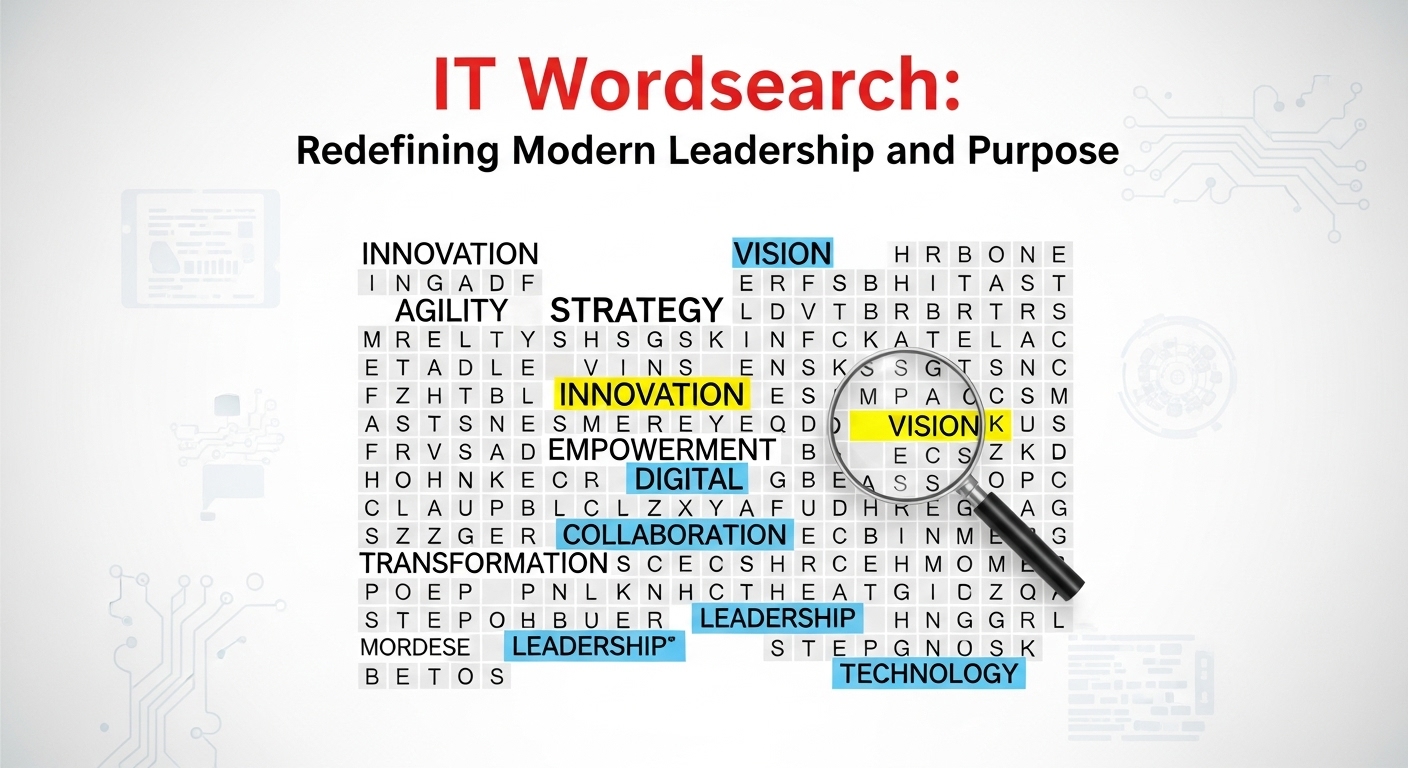BUSINESS
Top Office Equipment Investments for Small Businesses

Starting or growing a small businesses can feel overwhelming. There’s so much to do, and it’s easy to get lost in the details. One thing that can make a big difference is having the right office equipment.
The tools you choose help your team work better and save time. This article will look at the best office equipment to invest in for small businesses. These tools can help you get more done and make your office work more smoothly and professionally.
Why Office Equipment is Important
Running a small business means that every decision you make counts. Every choice, big or small, can affect your business. Office equipment is one of those important decisions.
The right tools help your business stay organized, cut down on mistakes, and make your team more productive. Whether it’s computers, printers, or furniture, the right office equipment makes your job easier and allows you to focus on growing your business.
Good office equipment also helps create a professional image. When clients or partners visit your office, they will see that you care about quality. It shows that you are serious about running your business and that you have a solid plan in place.
Computers and Laptops for All Employees
In today’s business world, computers are a must-have for any office. Without them, it’s hard to get work done. Whether you are answering emails, managing data, or creating presentations, computers are essential. That’s why investing in good computers or laptops is one of the smartest decisions you can make.
When choosing computers, it’s important to think about what your team needs. For example, if your employees use simple software for basic tasks, you won’t need the fastest or most expensive computers. But if your employees are doing graphic design, video editing, or other tasks that need more power, you’ll need computers that can handle it.
Make sure your computers have enough storage and speed. You don’t want your team to waste time waiting for their computers to load or run out of space. Invest in systems that can grow with your business so you won’t have to replace them too soon.
Printers and Copiers for Efficiency
Even though many tasks are done digitally, printing and copying are still important. For example, contracts, paperwork, and other important documents often need to be printed or copied.
Having a printer and copier in your office can save time and money. You won’t have to leave the office to make copies or print important documents.
Investing in a good printer is important. Look for one that fits your office’s needs. If your business prints a lot, you’ll need a high-volume printer that won’t break down easily. If your business only prints occasionally, a simpler printer will be enough.
A copier is another important tool. It helps you make duplicates of documents quickly, without needing to go to a print shop. If you don’t want to spend a lot of money upfront, you can lease a copier. Leasing is a good option because it allows you to access the latest technology without a huge initial cost. Plus, you can upgrade the copier as your business grows.
Office Furniture for Comfort and Productivity
Good office furniture is more than just about style-it’s about comfort and getting work done. Your employees spend a lot of time at their desks, so it’s important that the furniture supports their health and productivity. The right chairs, desks, and storage can make a big difference.
Ergonomic chairs are a good investment because they help reduce back pain and other problems caused by sitting too long. Desks should have enough space for computers, paperwork, and other tools. When employees have enough space to work, they can stay focused and organized.
Filing cabinets and shelves are important for keeping everything in the right place, too. Having a tidy workspace helps your team stay on track and avoid distractions.
Phone Systems for Clear Communication
A good phone system is essential for communication. Whether you use a traditional phone line or a modern VoIP system, clear communication is crucial for staying in touch with clients, customers, and employees.
An effective phone system helps your team respond quickly to calls and stay connected with each other. As your business grows, you may need a system that offers voicemail, call forwarding, and conference calls.
It’s also a good idea to have a phone system that can grow with your business needs. That way, you won’t have to change systems as your company expands.
Internet and Wi-Fi Setup
In today’s world, a fast and reliable internet connection is a must. Your business will rely on the Internet for almost everything, from emails to video meetings. Without a good connection, it can be hard to get work done. Investing in a strong internet connection will help your business run smoothly.
Make sure your office has enough bandwidth for all of your needs. If your employees are working from different devices or uploading large files, you’ll need a reliable connection that can handle it. A slow or unstable internet connection can waste time and frustrate your team.
In addition to your internet connection, a strong Wi-Fi network is important. Wi-Fi allows employees to work from anywhere in the office, whether they’re at a desk, in a meeting room, or a break area.
Software Tools for Collaboration
Along with physical equipment, software tools are also important investments for small businesses. These tools help your team collaborate, share files, and stay organized.
Cloud-based tools like Google Workspace or Microsoft 365 allow your team to work together on documents, spreadsheets, and presentations, no matter where they are.
Security Systems for Protection
Protecting your business’s data and equipment matters a lot. Setting up security systems is a wise choice. Firewalls, antivirus software, and strong passwords are key to keeping sensitive information safe. You might also look into physical security systems, such as cameras or alarms, to secure your office.
Investing in Office Equipment for Small Businesses Success
Investing in the right office equipment is vital for a small business. Tools like computers, printers, and furniture help your team stay organized. Phone systems and internet setups also improve how well everyone works. These tools also create a professional image, which builds trust with clients and customers.
By choosing the right equipment, you prepare your business for success. These tools save time, lower mistakes, and let your team focus on growth.
Check out our other blog posts for more informative content!
BUSINESS
The Power of Peace of Mind: Why Insurance Is an Investment, Not an Expense

Understanding Insurance as an Investment
Understanding insurance as an investment means recognizing that certain policies serve a dual purpose: offering financial protection and building long-term value. Unlike savings accounts, these policies create a safety net and accumulate cash value, like life insurance growing through interest or dividends, providing coverage and wealth buildup. Viewing insurance this way helps individuals choose policies aligned with their financial goals and risk tolerance. Even standard policies, such as auto insurance, contribute to financial planning by covering damages and liabilities, preventing major expenses that could affect budgets or investments. Recognizing insurance’s dual role as protection and potential investment allows for better financial stability and peace of mind.
Major Types of Insurance and Their Benefits
Each insurance type serves a specific purpose. Health insurance covers unexpected illnesses, providing lifesaving care when needed. Property and homeowner’s insurance help rebuild after fires or storms. Auto coverage protects your vehicle and passengers and fulfills legal requirements, shielding parties from losses. Policies can be customized with add-ons like identity theft or bundling car, house, or business liabilities to suit your needs. Home insurance is essential for homeowners, protecting against weather damage, theft, and liability, so you can rest easy. The right coverage considers your assets, lifestyle, and goals, building a safety net. When choosing insurance, look beyond premiums to the long-term impact of coverage.
The Economic Impact of Insurance on Communities
Insurance isn’t just about individual peace of mind; it fortifies entire communities. When people and businesses insure their property, health, and liabilities, they’re more likely to innovate, expand, and support local economies without the threat of catastrophic loss holding them back. In times of crisis, insurance payouts for rebuilding and recovery help stabilize neighborhoods and reduce the strain on public resources.
Economists have observed for a long time that insurance significantly supports entrepreneurship and investment in new ventures. Industries with good coverage tend to withstand economic downturns better and recover more quickly from unexpected shocks. Without the reassurance provided by insurance, growth and innovation would slow down considerably, and the potential risks might prevent significant advancements.
Integrating Insurance into Long-Term Financial Planning
Insurance should be a pillar of any sound financial plan. Start by assessing which risks could cause serious setbacks and match coverage types to those needs. For example, young families often prioritize life insurance for security, while property owners focus on home protection. Consistently reviewing policies ensures your protection evolves along with life changes, from family milestones to new business ventures.
Smart policyholders treat premiums as contributions toward future security—much like retirement savings or investments in education. This proactive mindset isn’t about compliance or mere obligation; it’s about wisely positioning yourself and your loved ones to weather whatever comes, while supporting the stability and prosperity of your broader community.
Conclusion
In today’s unpredictable world, the value of insurance extends far beyond a monthly bill. It is a critical investment, weaving together individual peace of mind with the collective strength of families, homeowners, and business owners. By embracing insurance as a strategic tool rather than an expense, you empower yourself to pursue your dreams and build a future fortified against life’s uncertainties.
Building your protection strategy now lays the groundwork for confidence, stability, and security—qualities that enrich not only your own life but also the broader community and economy. Make insurance a purposeful component of your financial plan and experience the freedom that comes from true peace of mind.
BUSINESS
IT Wordsearch: Redefining Modern Leadership and Purpose

In today’s rapidly evolving world, leadership is no longer defined solely by financial success or corporate expansion. The most influential leaders are those who integrate business excellence with social responsibility, building organizations that thrive while uplifting communities. One such emerging perspective in this landscape is IT wordsearch—a concept that symbolizes the search for meaning, alignment, and innovation in modern leadership.
This article explores how IT wordsearch represents more than a puzzle-like curiosity. It reflects a deeper leadership journey—one where purpose and performance align, where success is measured not only in profits but also in people, culture, and long-term impact.
What is IT Wordsearch?
At first glance, it wordsearch may sound like a simple activity: finding hidden words within a grid. Yet when applied to leadership and business, the phrase takes on a symbolic meaning. It suggests a process of discovery, alignment, and focus. Just as players search for hidden words, leaders must search for solutions, values, and strategies hidden within the complexity of today’s global challenges.
The idea resonates with professionals who believe that economic growth and positive social change are not mutually exclusive but deeply interconnected. Much like solving a wordsearch, success lies in recognizing patterns, connecting dots, and uncovering possibilities others may overlook.
A Leadership Philosophy Rooted in Discovery
At the heart of the it wordsearch philosophy is the belief that leadership is a continuous search for purpose. This approach emphasizes three core values:
- Empathy in leadership: Understanding the human side of business, from employees to customers.
- Sustainability: Ensuring long-term growth by balancing profitability with environmental and social responsibility.
- Collaboration: Building partnerships that amplify both business outcomes and community well-being.
This framework reflects a growing awareness that modern organizations do not exist in isolation. They are part of larger ecosystems where every decision has ripple effects. Leaders who embrace the it wordsearch mindset don’t just chase immediate wins—they uncover deeper value that sustains both business and society.
Bridging Business Growth with Social Impact
What makes the it wordsearch approach so powerful is its ability to link corporate success with community impact. Much like finding words hidden within a grid, leaders must look beyond the obvious to discover opportunities for shared growth.
Examples of this approach include:
- Workplace Culture: Designing inclusive, supportive environments that attract and retain diverse talent.
- Community Investment: Reinvesting resources into education, local initiatives, and social programs before they become urgent needs.
- Innovation for Good: Using technology to solve pressing challenges, from environmental sustainability to equitable access to services.
When these values are embedded into strategy, businesses create a virtuous cycle: strong companies nurture stronger communities, which in turn sustain future growth.
Influence in the Digital Age
The digital landscape has amplified the importance of acting with foresight. Just as a wordsearch reveals hidden connections, the digital world reveals opportunities for influence and innovation. Leaders today use platforms not only for visibility but also to inspire movements and conversations around responsible practices.
With it wordsearch as a guiding principle, leaders leverage digital tools to:
- Reach broad audiences with authentic messages.
- Engage younger generations who value transparency and inclusion.
- Inspire peers to adopt purpose-driven strategies.
In this sense, digital influence is no longer about self-promotion—it is about amplifying messages that shape industries and communities alike.
A Model for the Next Generation
The rise of it wordsearch as a metaphor for leadership aligns closely with the values of Millennials and Gen Z. Younger professionals increasingly seek role models who:
- Live authentically, aligning values with action.
- Promote diversity and equity, not as an afterthought but as a foundation.
- Think globally, addressing interconnected challenges such as climate change, inequality, and digital ethics.
These expectations highlight why it wordsearch resonates—it symbolizes the search for alignment in an often disjointed world. By embodying these principles, leaders position themselves not just as executives but as mentors and trailblazers.
Challenges in the Search
Like solving a difficult puzzle, applying the it wordsearch philosophy is not without challenges. Leaders face:
- Balancing short-term pressures with long-term commitments to purpose.
- Convincing traditional stakeholders of the measurable value of social responsibility.
- Navigating uncertainty in rapidly changing markets and technologies.
However, these challenges are also opportunities. Much like hidden words, solutions often lie just beneath the surface. Leaders who embrace curiosity and adaptability can turn obstacles into breakthroughs.
Why the Wordsearch Metaphor Matters
The metaphor of it wordsearch matters because it reflects the complexity of modern leadership. Success isn’t about finding a single answer; it’s about uncovering many interconnected solutions. A leader who can anticipate challenges, spot hidden opportunities, and align strategy with purpose is far better equipped to guide organizations through uncertainty.
This proactive mindset is essential in a world where reactive leadership often falls short. Waiting until challenges dominate headlines is too late. By searching for solutions early—before they are visible to all—leaders create lasting resilience.
Looking Ahead
As leadership continues to evolve, it wordsearch represents more than a clever metaphor. It is a call to action: to search for meaning, embrace complexity, and discover opportunities before they become urgent.
In a world where consumers, employees, and investors increasingly demand accountability, the leaders who succeed will be those who treat every challenge like a wordsearch puzzle—hidden with possibilities waiting to be uncovered.
The future belongs to leaders who see beyond profits, who connect performance with purpose, and who embrace the ongoing search for what truly matters. In the end, the most powerful leaders are those who uncover meaning not after the fact, but during the process—just as one finds words hidden in a puzzle grid.
BUSINESS
Before It’s News: Redefining Leadership in a Changing World

In today’s interconnected world, leadership is no longer defined purely by profit margins, market dominance, or financial growth. Increasingly, the leaders who stand out are those who create meaningful change—bridging the gap between business performance and social responsibility. In fact, conversations happening before it’s news often shape how organizations and individuals think about the future.
This article explores how the concept of “before it’s news” reflects a deeper cultural and business shift—anticipating trends, shaping narratives, and redefining success. By examining the journeys of emerging leaders, their philosophies, and the growing demand for purpose-driven strategies, we can understand why the future of leadership depends on action taken before headlines break.
What Does “Before It’s News” Mean in Leadership?
At its core, “before it’s news” suggests being proactive rather than reactive. It is about anticipating changes, leading with foresight, and addressing challenges before they become crises. In leadership, this mindset is vital. The leaders who succeed are those who don’t wait for external pressures to dictate their strategies; they innovate early, prioritize people, and create impact that resonates long before traditional media picks it up.
This principle goes beyond marketing or branding. It’s about cultivating values and practices that matter today—so they are recognized tomorrow. Leaders who embody this philosophy are changing industries, communities, and even global perspectives.
Leadership Rooted in Purpose
A strong “before it’s news” leader understands that success cannot be measured solely by numbers. Instead, purpose-driven business practices define sustainable growth. These practices focus on three core pillars:
- Empathy: Understanding the human side of organizations, from employees and customers to communities at large.
- Sustainability: Balancing financial outcomes with environmental stewardship and long-term responsibility.
- Collaboration: Building meaningful partnerships that amplify both business and community goals.
This shift reflects a growing recognition that businesses are embedded in wider ecosystems. When organizations thrive at the expense of their communities, the gains are short-lived. But when they integrate purpose, growth becomes both durable and inclusive.
The Power of Anticipating Change
Why is anticipation so crucial? Because the business and social landscape evolves faster than ever. Digital transformation, environmental concerns, and shifting workforce expectations demand leadership that adapts instantly. Waiting until something becomes a headline is often too late.
Those who act before it’s news are the ones who:
- Launch sustainable practices before regulations force change.
- Foster inclusive cultures before social movements highlight inequities.
- Develop innovations that solve problems before they escalate.
This mindset creates resilience and positions leaders as trailblazers rather than followers.
Bridging Business Growth with Social Impact
What makes this approach especially powerful is its ability to merge traditional business success with broader impact. Leaders who anticipate trends and act early can align profitability with social value. For example:
- Workplace Culture: Proactively shaping inclusive environments that attract diverse talent before it becomes a hiring crisis.
- Community Investment: Supporting local education, health, and initiatives before communities demand it.
- Innovation for Good: Using technology and research to solve social challenges before they grow critical.
When leaders focus on these areas, they establish a virtuous cycle. Businesses grow because they are trusted; communities thrive because they are supported; and together they build resilience for the future.
Influence in the Digital Era
The phrase “before it’s news” also captures how digital platforms have changed leadership. Information moves instantly. Narratives spread across social media, blogs, and grassroots platforms faster than traditional outlets can keep up. For leaders, this means two things:
- Visibility is critical—voices are amplified in real time, and silence can be just as noticeable as action.
- Authenticity matters—audiences, especially younger generations, value transparency and consistency.
Forward-thinking leaders use digital tools not only for branding but also to amplify conversations around responsibility, inclusion, and innovation. This presence builds trust and ensures their messages reach wider audiences before others shape the narrative.
A Model for the Next Generation
Younger generations—Millennials and Gen Z—are especially drawn to leaders who embody the spirit of “before it’s news.” These professionals want mentors and role models who:
- Live authentically, ensuring values align with actions.
- Promote diversity and inclusion, not as an afterthought, but as a core principle.
- Think globally, acknowledging interconnected challenges like climate change, inequality, and technological disruption.
By championing these qualities, leaders set new standards for what success means. They show that power is not in waiting for change but in creating it.
Challenges Along the Way
Of course, leading with foresight is not without obstacles. Leaders committed to acting before something becomes news often face:
- Short-term pressure from stakeholders focused solely on quarterly results.
- Skepticism from traditional thinkers who struggle to see the ROI of social responsibility.
- Uncertainty from markets and technologies that shift constantly.
But within these challenges lie opportunities. Anticipating barriers allows leaders to innovate solutions earlier, positioning themselves as adaptable and resilient.
Why Acting Before It’s News Matters
The difference between reactive leadership and proactive leadership can define the fate of organizations. Those who wait until issues reach headlines risk falling behind. Those who anticipate change not only avoid crises but also build credibility, trust, and long-term strength.
This is especially true in a world where consumers, employees, and investors demand accountability. The expectation is no longer optional—it’s central. Leaders who act before it’s news are setting the gold standard.
Looking Ahead
As leadership continues to evolve, the “before it’s news” mindset will only grow in importance. The ability to combine foresight, empathy, and strategy creates leaders who do more than respond—they shape the future.
In an era where headlines change daily, real leadership is defined not by reacting to what’s trending, but by acting on what truly matters before it ever reaches the spotlight.
The next generation of successful leaders will be those who understand this simple truth: the most powerful decisions are made before it’s news.
-

 HEALTH1 year ago
HEALTH1 year agoIntegrating Semaglutide into Your Weight Loss Plan: A Practical Guide
-

 HOME IMPROVEMENT1 year ago
HOME IMPROVEMENT1 year agoHow to Choose the Perfect Neutral Area Rug for Every Room
-

 LAW1 year ago
LAW1 year agoTeenage Drivers and Car Accidents in California: Risks and Parental Liability
-

 LAW1 year ago
LAW1 year agoPost-Divorce Considerations in California: Modifications and Long-Term Planning
-

 CONSTRUCTION1 year ago
CONSTRUCTION1 year agoConstruction Site Safety Regulations in New York and Your Rights as a Worker
-

 HOME1 year ago
HOME1 year agoSandra Orlow: The Teen Model Who Captivated the Internet
-

 FINANCE1 year ago
FINANCE1 year agoDigital Asset Management in Florida Estate Planning
-

 LAW1 year ago
LAW1 year agoKentucky’s School Football: Concussions, Injuries, and Legal Options


